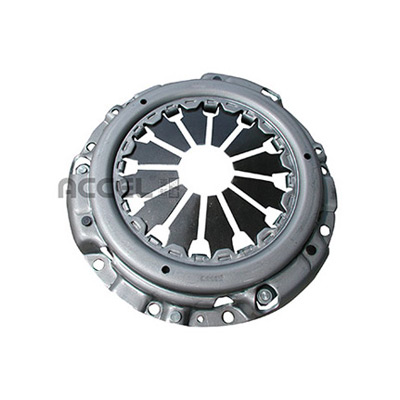- Arabic
- French
- Russian
- Spanish
- Portuguese
- Turkish
- Armenian
- English
- Albanian
- Amharic
- Azerbaijani
- Basque
- Belarusian
- Bengali
- Bosnian
- Bulgarian
- Catalan
- Cebuano
- Corsican
- Croatian
- Czech
- Danish
- Dutch
- Afrikaans
- Esperanto
- Estonian
- Finnish
- Frisian
- Galician
- Georgian
- German
- Greek
- Gujarati
- Haitian Creole
- hausa
- hawaiian
- Hebrew
- Hindi
- Miao
- Hungarian
- Icelandic
- igbo
- Indonesian
- irish
- Italian
- Japanese
- Javanese
- Kannada
- kazakh
- Khmer
- Rwandese
- Korean
- Kurdish
- Kyrgyz
- Lao
- Latin
- Latvian
- Lithuanian
- Luxembourgish
- Macedonian
- Malgashi
- Malay
- Malayalam
- Maltese
- Maori
- Marathi
- Mongolian
- Myanmar
- Nepali
- Norwegian
- Norwegian
- Occitan
- Pashto
- Persian
- Polish
- Punjabi
- Romanian
- Samoan
- Scottish Gaelic
- Serbian
- Sesotho
- Shona
- Sindhi
- Sinhala
- Slovak
- Slovenian
- Somali
- Sundanese
- Swahili
- Swedish
- Tagalog
- Tajik
- Tamil
- Tatar
- Telugu
- Thai
- Turkmen
- Ukrainian
- Urdu
- Uighur
- Uzbek
- Vietnamese
- Welsh
- Bantu
- Yiddish
- Yoruba
- Zulu
ก.ย. . 09, 2024 10:18 Back to list
micro timing belt
Understanding Micro Timing Belts An Essential Component in Precision Machinery
In the world of precision machinery and automotive engineering, timing belts play a crucial role in ensuring the smooth operation of various systems. Among the different types of timing belts, micro timing belts are becoming increasingly prominent due to their compact size and high-performance capabilities. These belts are specifically designed for applications that require precise synchronization, reliability, and efficiency in tight spaces.
What is a Micro Timing Belt?
Micro timing belts are specialized belts characterized by their small pitch, lightweight design, and high tensile strength. Typically made from durable materials like polyurethane, these belts incorporate reinforced fiber or steel to enhance their durability and load capacity. The micro timing belt's design allows for precise motion control, making it ideal for small motors, robotics, 3D printers, and CNC machines.
Applications of Micro Timing Belts
Micro timing belts are widely used in various applications where space constraints and precision are paramount. For instance, in the realm of robotics, micro timing belts facilitate the accurate movement of robotic arms and components, ensuring that tasks are performed with minimal error. In the 3D printing industry, these belts are essential for the reliable operation of extruders and print heads, contributing to higher-quality prints with intricate details.
Moreover, micro timing belts find applications in medical devices, where precision and reliability are critical
. From MRI machines to automated surgical instruments, these belts ensure that components move with the required accuracy, thus enhancing the overall functionality and safety of medical equipment.micro timing belt

Advantages of Micro Timing Belts
One of the key advantages of micro timing belts is their ability to minimize backlash, a phenomenon where the movement of a belt or gear is not synchronized due to play between parts. This is especially important in applications requiring high precision, as even slight inaccuracies can result in significant operational issues. Micro timing belts help achieve a more consistent transfer of motion, thereby improving the overall performance of the mechanical system.
Additionally, micro timing belts are designed to operate quietly and smoothly, which is essential in environments where noise levels must be kept to a minimum—such as laboratories or offices. Their lightweight nature also contributes to higher efficiency, as these belts require less energy to operate compared to heavier alternatives.
Maintenance and Care
Despite their robust design, micro timing belts do require some level of maintenance to ensure optimal performance. Regular inspections are essential to check for wear and tear, as factors such as misalignment or over-tensioning can lead to premature failure. Properly lubricating the timing belt system can also extend the lifespan of the belt and improve its performance.
Conclusion
In conclusion, micro timing belts are integral to the functionality of various machine systems, providing precise control in compact form factors. As industries continue to demand higher efficiency and accuracy, the role of micro timing belts will likely become even more prominent. Understanding their applications, advantages, and maintenance needs can help engineers and technicians harness their full potential, driving innovation and enhancing performance in numerous fields. Whether in robotics, medical devices, or precision engineering, micro timing belts represent a step forward in the quest for mechanical excellence.
-
Korean Auto Parts Timing Belt 24312-37500 For Hyundai/Kia
NewsMar.07,2025
-
7PK2300 90916-T2024 RIBBED BELT POLY V BELT PK BELT
NewsMar.07,2025
-
Chinese Auto Belt Factory 310-2M-22 For BMW/Mercedes-Benz
NewsMar.07,2025
-
Chinese Auto Belt Factory 310-2M-22 For BMW/Mercedes-Benz
NewsMar.07,2025
-
90916-02660 PK Belt 6PK1680 For Toyota
NewsMar.07,2025
-
drive belt serpentine belt
NewsMar.07,2025

